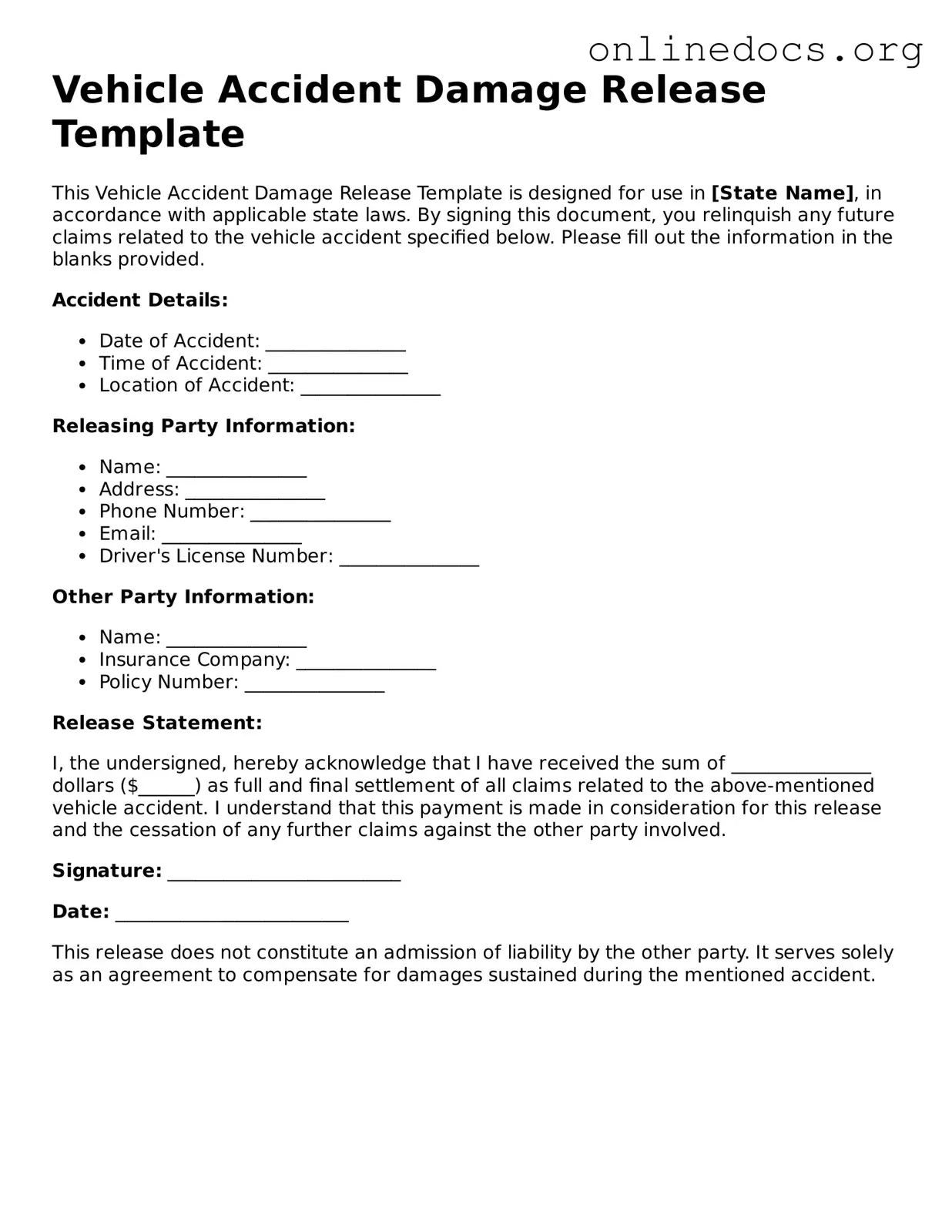The Vehicle Accident Damage Release form is similar to a Release of Liability form. Both documents aim to protect one party from future claims or lawsuits. When an individual signs a Release of Liability, they agree not to hold another party responsible for any injuries or damages that may arise from a specific activity or event. This principle is also central to the Vehicle Accident Damage Release, where the signer waives their right to pursue further compensation for damages after accepting a settlement.
Another comparable document is the Settlement Agreement. A Settlement Agreement outlines the terms under which parties resolve a dispute without going to court. Like the Vehicle Accident Damage Release, it typically involves a payment in exchange for the release of claims. Both documents serve to finalize an agreement, ensuring that all parties understand their rights and obligations after a settlement has been reached.
The Waiver of Subrogation is another relevant document. This waiver prevents an insurance company from pursuing a third party for damages after paying a claim. In the context of a Vehicle Accident Damage Release, the waiver ensures that the injured party cannot seek additional compensation from the at-fault driver’s insurance after accepting a settlement. Both documents aim to limit future claims and clarify the parties' responsibilities.
The Non-Disclosure Agreement (NDA) shares similarities as well. While primarily focused on confidentiality, an NDA can also prevent parties from discussing the terms of a settlement, including the details of a Vehicle Accident Damage Release. Both documents establish boundaries regarding what can be disclosed, thus protecting the interests of all parties involved.
The Indemnity Agreement is also akin to the Vehicle Accident Damage Release. An Indemnity Agreement requires one party to compensate another for certain damages or losses. In vehicle accidents, this can mean that one party agrees to cover the costs associated with damages, similar to how a Damage Release may limit further claims after an agreement is made. Both documents are designed to allocate risk and responsibility clearly.
When considering various legal documents designed to protect interests, it's essential to recognize that the Vehicle Release of Liability form stands out as a critical tool for vehicle owners. This form not only helps clarify the transfer of ownership but also ensures that any future liabilities are addressed upfront. For further information on how to effectively navigate these legalities, visit https://pdfdocshub.com/, where resources on this topic are available to assist you in making informed decisions.
Lastly, the General Release form is similar in purpose and function. A General Release typically releases one party from any claims or liabilities related to a specific incident. Like the Vehicle Accident Damage Release, it signifies that the signer agrees to relinquish any future claims against the other party, ensuring that the matter is considered resolved. Both forms serve to provide closure and finality to disputes arising from accidents.
